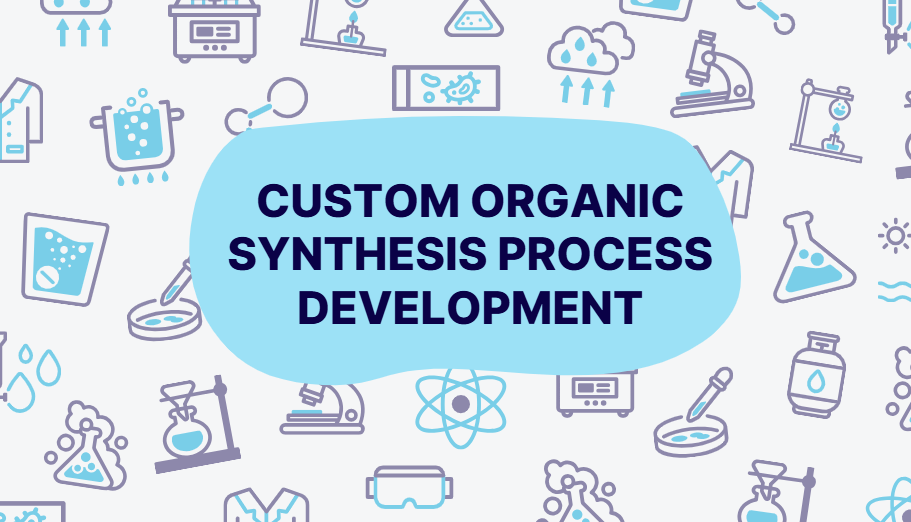Custom polymer synthesis is a transformative field in material science, enabling the creation of polymers with tailored properties for specific applications. From improving drug delivery systems to manufacturing durable industrial materials, custom polymers are pivotal in numerous industries. This beginner’s guide explores the fundamental techniques in custom polymer synthesis, breaking down the science into accessible insights for newcomers and experts alike.
Understanding Custom Polymer Synthesis
Custom polymer synthesis involves designing and creating polymers with precise molecular arrangements, structural properties, and functionalities. Unlike conventional polymers, custom polymers are engineered to meet specific requirements, making them highly valuable in fields such as biomedicine, electronics, and sustainable materials.
Key benefits include:
- Enhanced performance: Tailored mechanical, thermal, and chemical properties.
- Precision targeting: Functional groups added for specialized applications.
- Sustainability: Biodegradable and eco-friendly polymer solutions.
Essential Techniques in Custom Polymer Synthesis
1. Free Radical Polymerization
This technique is one of the most widely used methods for creating polymers.
- How it works: A free radical initiator starts the polymerization process, adding monomers to form long chains.
- Applications: Used for producing plastics, adhesives, and coatings.
- Advantages: Simple and versatile, suitable for a wide range of monomers.
Example: Polyethylene (used in packaging) is synthesized using free radical polymerization.
2. Living Polymerization Techniques
Living polymerization offers precise control over polymer molecular weight and architecture.
Atom Transfer Radical Polymerization (ATRP)
- Mechanism: Reversible activation of radicals ensures controlled growth.
- Applications: Tailored block copolymers for drug delivery systems.
Reversible Addition-Fragmentation Chain Transfer (RAFT) Polymerization
- Mechanism: Chain transfer agents regulate polymer growth.
- Applications: Polymers with uniform molecular weight, used in hydrogels and nanomaterials.
Advantages:
- High molecular weight precision.
- Versatile monomer compatibility.
3. Step-Growth Polymerization
In step-growth polymerization, monomers react in a stepwise manner to form polymers.
- How it works: Monomers with two or more reactive groups link together.
- Applications: Producing polyesters, polyamides, and polyurethanes.
- Example: Nylon synthesis involves step-growth polymerization of diamines and diacids.
Advantages:
- Suitable for high-performance materials.
- Allows large-scale synthesis.
4. Emulsion Polymerization
This technique is ideal for creating polymers in aqueous environments.
- How it works: Monomers are dispersed in water with surfactants to form an emulsion.
- Applications: Latex paints, coatings, and adhesives.
- Advantages:
- Produces high-molecular-weight polymers.
- Eco-friendly, using water as a solvent.
5. Ring-Opening Polymerization
Ring-opening polymerization involves the polymerization of cyclic monomers.
- How it works: A catalyst opens the ring structure of monomers, initiating polymerization.
- Applications:
- Polylactic acid (PLA) for biodegradable plastics.
- Polycaprolactone (PCL) for medical sutures.
Advantages:
- Produces polymers with unique mechanical properties.
- Useful for creating biocompatible materials.
6. Solvent-Free Polymerization
With growing emphasis on sustainability, solvent-free methods are gaining popularity.
- How it works: Polymerization occurs without the use of organic solvents, reducing waste and toxicity.
- Applications: Eco-friendly coatings and adhesives.
- Advantages:
- Reduced environmental impact.
- Cost-effective.
7. Copolymerization
Combining two or more types of monomers, copolymerization creates materials with hybrid properties.
Block Copolymers
- Monomers are added sequentially, forming distinct polymer segments.
- Applications: Nanostructures, drug delivery systems.
Random Copolymers
- Monomers are randomly distributed within the polymer chain.
- Applications: Flexible and durable materials.
8. Surface-Functionalized Polymers
Surface-functionalization adds specific chemical groups to a polymer’s surface, enhancing its interaction with the environment.
- How it works: Post-polymerization modifications introduce functional groups.
- Applications: Biosensors, catalysts, and targeted drug delivery.
- Advantages:
- Improved specificity.
- Tailored surface properties for unique applications.
Emerging Techniques in Custom Polymer Synthesis
1. Click Chemistry
Click chemistry offers rapid and efficient polymer synthesis by “clicking” together monomers with high precision.
- Applications: Biomaterials, smart polymers, and nanostructures.
- Advantages:
- High yield with minimal by-products.
- Broad compatibility with various functional groups.
2. Additive Manufacturing
Also known as 3D printing, this technique integrates custom polymer synthesis into advanced manufacturing.
- How it works: Tailored polymers are synthesized as printable materials.
- Applications: Prosthetics, aerospace components, and medical devices.
- Advantages:
- Enables rapid prototyping.
- Reduces material waste.
3. Enzyme-Catalyzed Polymerization
Using enzymes as catalysts, this technique produces biocompatible and sustainable polymers.
- Applications: Drug delivery, tissue engineering, and biodegradable plastics.
- Advantages:
- Eco-friendly and energy-efficient.
- High selectivity and specificity.
Applications Across Industries
1. Healthcare and Biotechnology
- Drug Delivery Systems: Controlled release mechanisms using biocompatible polymers.
- Tissue Engineering: Scaffolds for regenerating skin, bones, and organs.
2. Electronics
- Conductive Polymers: Used in flexible electronics and sensors.
- Photonic Materials: Polymers for advanced optical devices.
3. Sustainable Solutions
- Biodegradable Packaging: Replacing conventional plastics.
- Water Purification: Functionalized polymers remove contaminants efficiently.
Challenges in Custom Polymer Synthesis
- Scalability: Transitioning from lab-scale to industrial production can be complex.
- Cost: Advanced techniques and specialized monomers increase expenses.
- Regulatory Compliance: Medical and environmental applications face stringent regulations.
Why Choose ResolveMass Laboratories?
At ResolveMass Laboratories, we specialize in custom polymer synthesis using state-of-the-art techniques. Our services include:
- Tailored polymer design for industrial and biomedical applications.
- Comprehensive material analysis to ensure quality and performance.
- Sustainable practices for eco-friendly innovations.
Explore our services:
- Polymer Synthesis and Characterization
- Drug Delivery System Development
- Advanced Materials Research
Contact Us today to bring your polymer projects to life.
References
- Hawker, C. J., & Wooley, K. L. (2005). The Convergence of Synthetic Organic and Polymer Chemistries. Science, 309(5738), 1200-1205. DOI: 10.1126/science.1109991
- Kamigaito, M., et al. (2001). Controlled/Living Radical Polymerization: Features, Developments, and Perspectives. Chemical Reviews, 101(12), 3689–3745. DOI: 10.1021/cr9901181
- Lutz, J.-F., et al. (2008). Designing Functional Polymers Using Modern Synthetic Methods. Nature Materials, 7(5), 350–356. DOI: 10.1038/nmat2145

